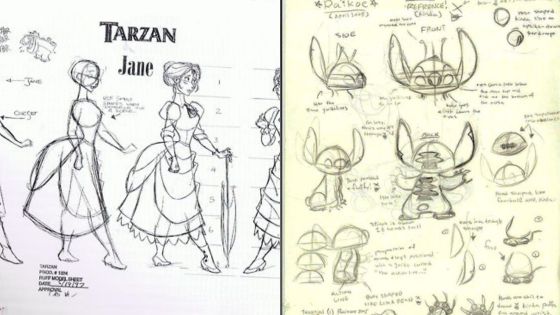Drawing dynamic poses can make characters feel alive and full of energy. It helps artists capture movement and emotion, making their artwork more interesting to look at. The key to drawing dynamic poses is focusing on gesture, balance, and the flow of the body rather than just the details.
Understanding basic anatomy and perspective also helps bring more life to poses. By practicing quick gesture sketches and studying how bodies move, artists can avoid stiffness in their drawings. Using references and breaking poses down into simple shapes makes the process easier and more natural.
With some practice and the right approach, anyone can improve their dynamic posing skills. This guide shares useful tips to help artists bring action and movement into their drawings in a clear and simple way.
Understanding Dynamic Poses
Dynamic poses bring energy and life to character drawings. They show motion, emotion, and personality through body language. To create these poses, artists need to know how to capture movement and avoid common errors. Studying movement carefully will help artists make their figures feel natural and full of action.
What Makes a Pose Dynamic
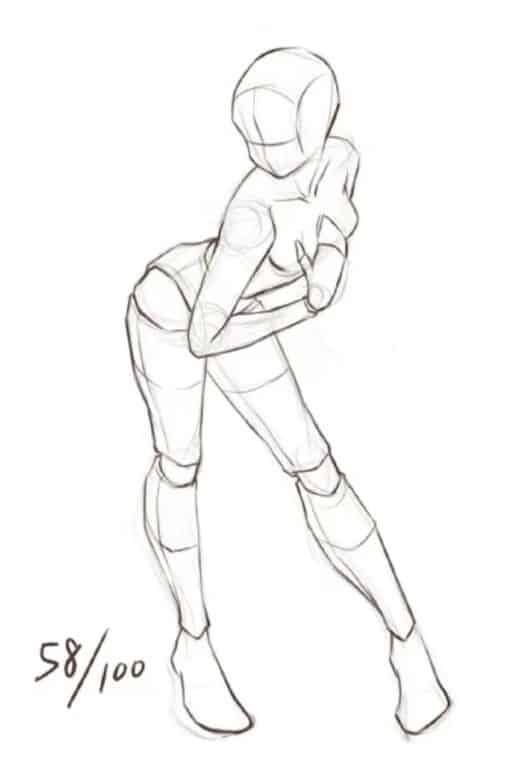
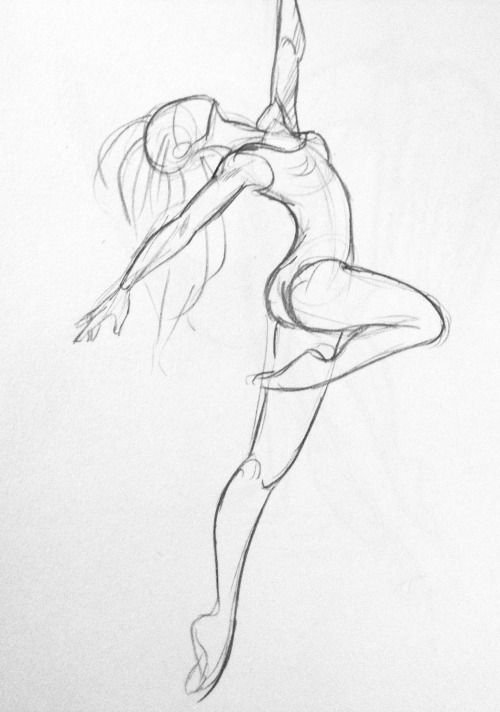
A dynamic pose usually shows motion or tension. It often includes a clear line of action, which is a simple curve or angle that runs through the body. This line guides the flow and gives direction to the pose.
Balance between tension and relaxation matters. For example, one part of the body might be stretched while another is more relaxed, creating contrast. This adds interest and shows how muscles work.
Dynamic poses often avoid stiffness by using asymmetry. If a figure’s limbs or body parts are too symmetrical or straight, the pose looks lifeless. By changing angles and positions, the pose looks more alive and believable.
Common Mistakes to Avoid
One big mistake is making poses too stiff or straight. Poses that lack curves or clear direction feel flat and boring. Artists should avoid drawing limbs perfectly straight or keeping both sides of the body identical.
Another error is ignoring balance. Even when a figure is in motion, they need a believable center of gravity. Without this, the pose looks like the character might fall over, breaking realism.
Finally, many artists focus too much on details early on. Jumping straight into hands or clothing before the pose is set makes the figure lose its energy. It’s better to first nail the overall gesture and flow before adding details.
Analyzing Movement in Art
Understanding how the body moves helps artists create better poses. Studying real-life actions or watching videos can provide insight into natural shifts in balance, muscle tension, and joint rotation.
Artists often break down movement into simple shapes. Circles for joints and lines for limbs make it easier to see how parts connect and move together.
Also, gesture drawing is a useful practice. It captures the essence of motion quickly without focusing on details. This trains the artist’s eye to notice rhythms and flows in poses.
By observing movement through different angles and speeds, artists can add variety and realism to their dynamic poses.
Planning Your Drawing
Good preparation is key to capturing lively and natural poses. This involves gathering useful images, experimenting with quick sketches, and focusing on clear outlines to make the figure stand out.
Using Reference Images
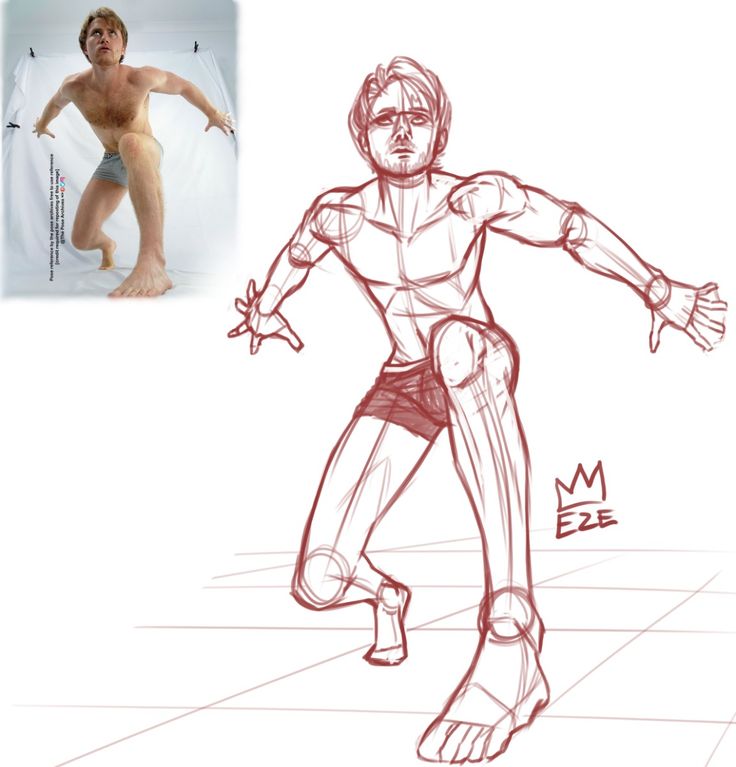
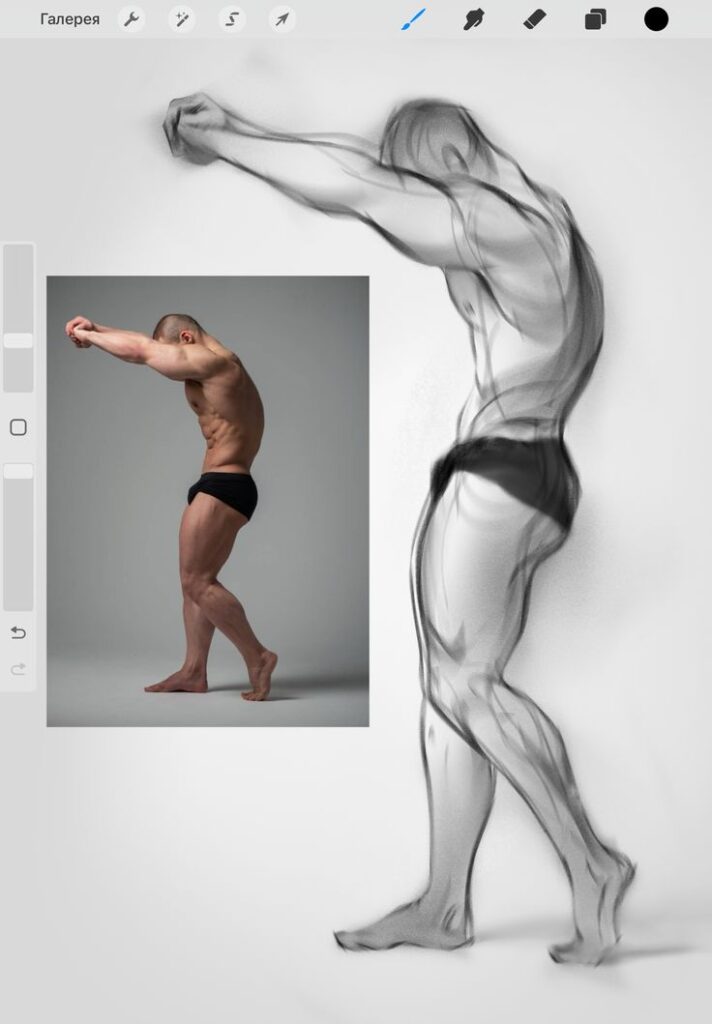
Using reference images helps artists understand how the body moves and looks in real life. These can be photos, videos, or even 3D models. References give clues about muscle tension, weight distribution, and balance.
Artists should collect a variety of images showing the pose from different angles. This variety helps avoid stiff or unnatural drawings. It’s important to avoid copying exactly and instead use references to inspire and guide the artwork.
Many artists use online pose libraries or take their own photos. They study the details and then apply what they learn to create dynamic and believable figures.
Thumbnail Sketching for Energy
Thumbnail sketches are small, rough drawings that capture the main idea of a pose quickly. These tiny sketches let artists play with different poses before committing to a final design.
The main goal is to focus on movement, flow, and energy instead of details. Quick lines and simple shapes show how the figure moves and where the weight falls.
By doing several thumbnails, artists can find the most dynamic option. This process saves time and avoids stiffness since it encourages freedom and exploration early on.
Establishing a Strong Silhouette
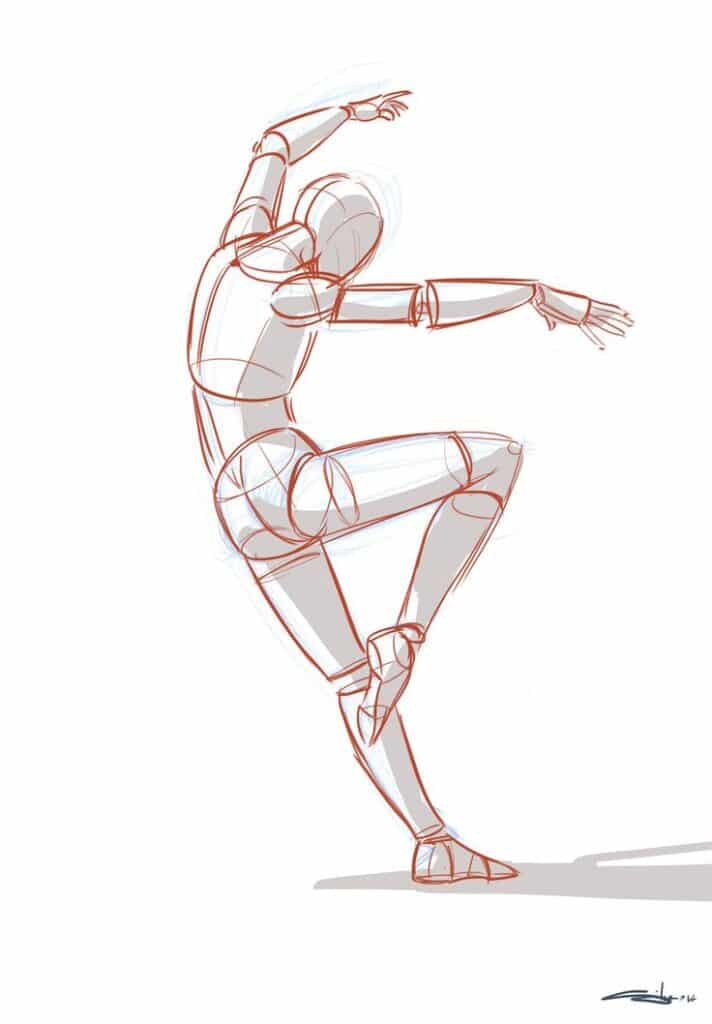
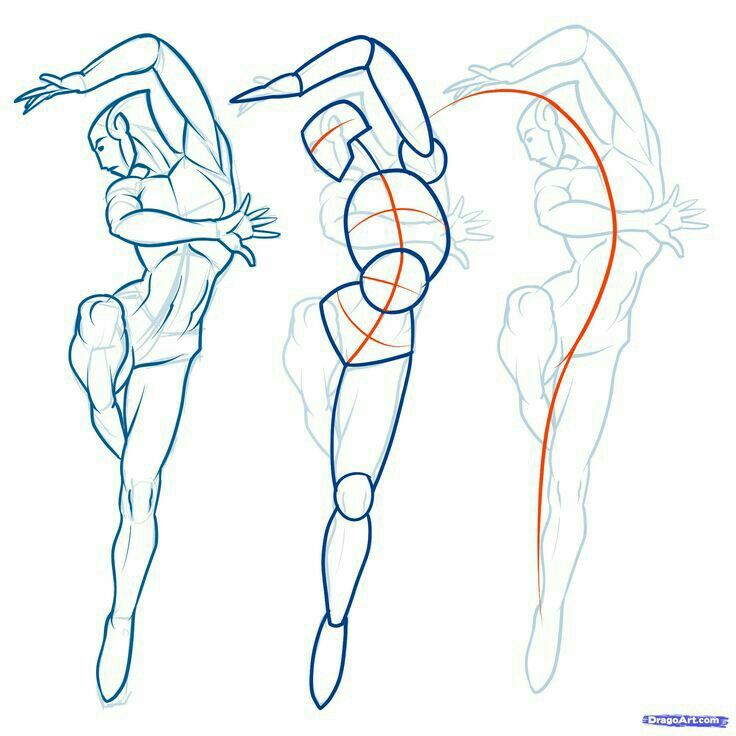
A strong silhouette makes a pose easy to read and visually appealing. It shows the figure’s overall shape clearly without relying on details.
Artists should check their drawing at a distance or by turning it into a solid shape filled with black. If the pose still reads well, it’s a good sign.
Silhouettes help emphasize action, create clearer body language, and improve storytelling in a drawing. They make characters pop and keep the viewer’s eye interested. Good silhouettes often include clear limb placement and balanced weight distribution.
Mastering Gesture Drawing
Gesture drawing helps artists catch the energy and movement in a pose quickly. It focuses on the big picture rather than details. To get better, an artist must move fast, emphasize the action, and find smooth lines that bring life to the figure.
Capturing Action Quickly

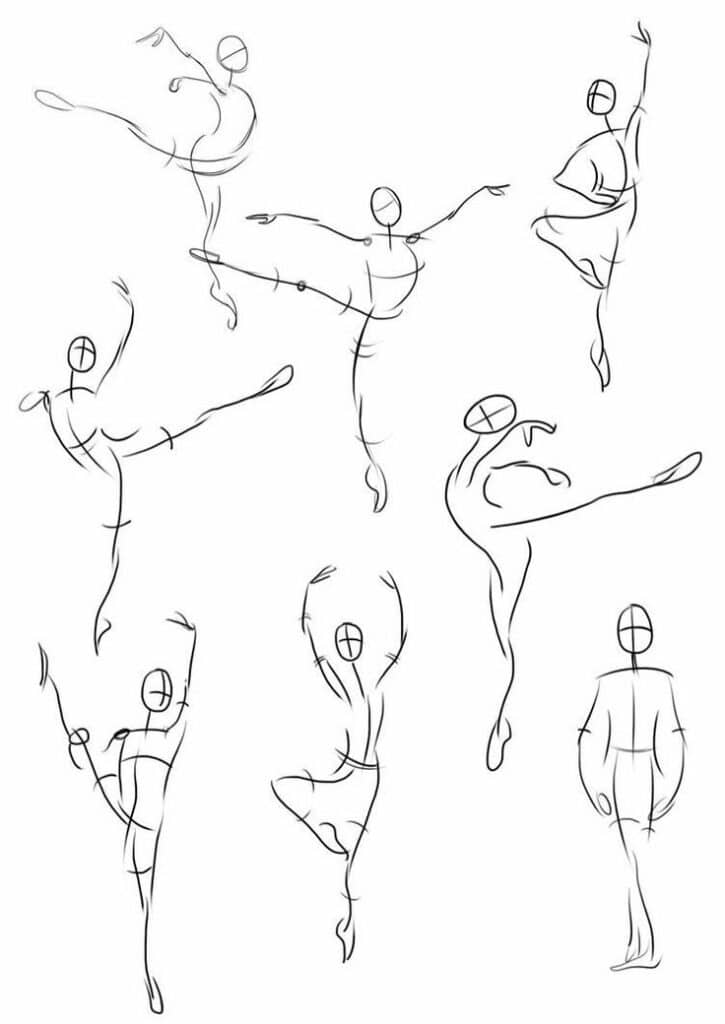
The main goal of gesture drawing is to capture the essence of a pose in a short time. Artists usually spend about 30 seconds to 2 minutes on a sketch. Quick work forces them to focus on the main motion and avoid getting stuck on details.
This fast pacing trains the eye to see overall shapes and movement. It also helps build confidence because the artist learns to trust their instincts. Using loose, light lines encourages freedom and flow in the drawing.
Trying different poses and practicing daily can improve this skill. Even simple stick figures can show dynamic motion if the action is clear and bold.
Exaggerating for Impact
Exaggerating parts of a pose makes it more exciting and easier to read. Sometimes a small twist or stretch can turn a static figure into a lively one. Artists stretch limbs or bend the spine more than normal to show energy.
This doesn’t mean breaking anatomy but pushing it just enough to make the motion obvious. Exaggeration highlights the key movement and mood of the pose.
Artists can experiment by tilting the head more, bending knees wider, or extending a hand farther. This makes sketches feel less stiff and invites viewers to connect emotionally.
Developing Flow and Rhythm


Flow and rhythm are about connecting lines smoothly to guide the eye through the pose. Gesture drawing isn’t just about shape—it’s about movement. Lines should curve naturally, showing how weight transfers through the body.
Artists use “S” curves or sweeping lines to build rhythm. This helps create balance and a sense of motion. Flow also ties together different parts, like arms and legs, so they don’t look disconnected.
Studying dance or watching people move can improve this understanding. Repeating poses while focusing on smooth, confident strokes trains this sense of rhythm in drawing.
Balancing Anatomy and Motion
Drawing dynamic poses well means understanding the body’s structure and how it moves. Knowing proportions, muscle behavior, and the body’s center of gravity helps artists create figures that look both natural and full of life.
Breaking Down Figure Proportions
Proportions are the basic measurements that define the figure’s shape. A common way to start is by dividing the body into sections, such as the head, torso, and legs. Many artists use the “head count” method, where the height of an average adult is about 7 to 8 heads tall. This helps keep limbs and body parts in the right scale relative to each other.
It’s important to notice how proportions shift when the figure moves. For example, bending or twisting can change the perceived length of limbs. Paying attention to these changes makes the pose feel more believable.
Understanding Muscle Movement
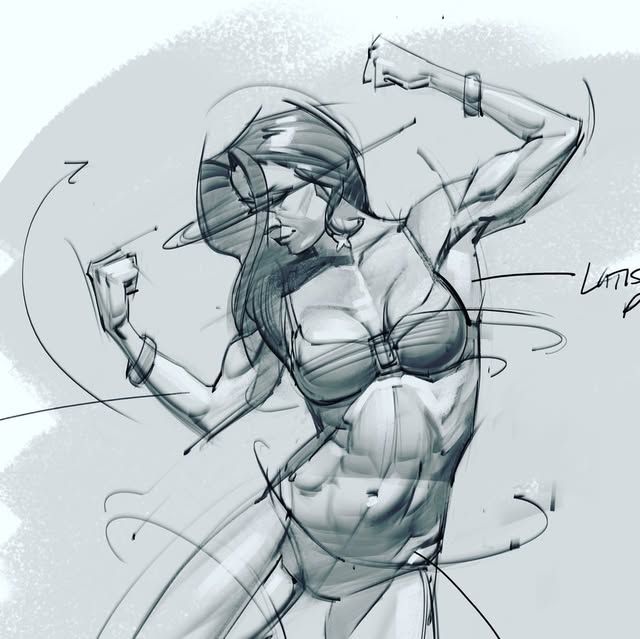
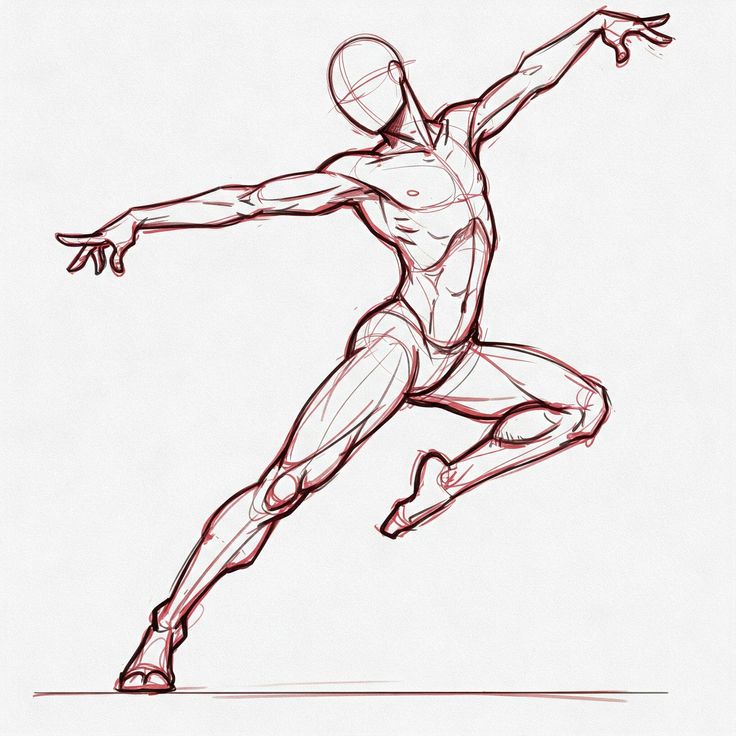
Muscles don’t stay still during a pose—they stretch, contract, and react to tension. Artists should study how major muscle groups change shape when the body moves. For example, the biceps tighten when the arm bends, while muscles along the back stretch during a twist.
Focusing on these changes adds energy to a pose. It also helps avoid stiff or flat drawings. Observing real-life movement or using reference photos improves this skill quickly.
Reflecting Weight and Balance
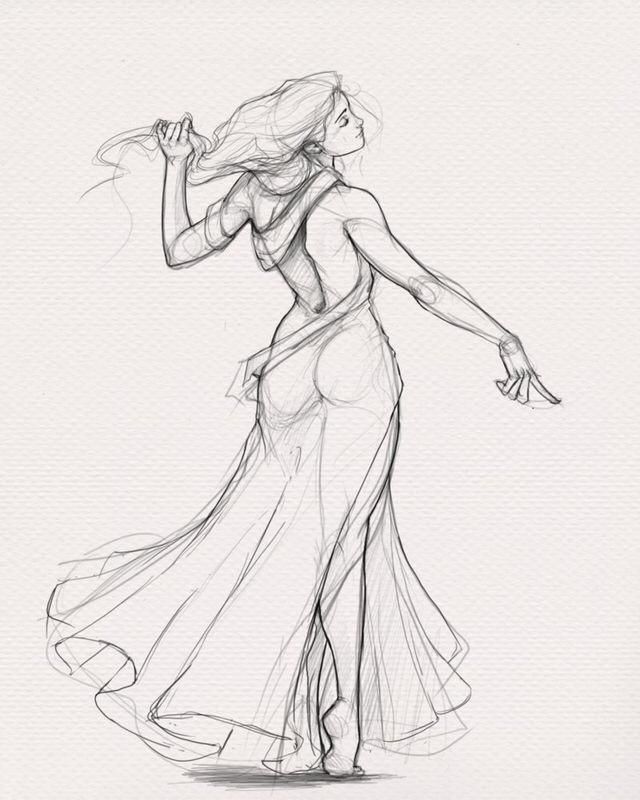

Weight and balance give a pose its realism. The body’s center of gravity shifts depending on the pose, affecting how weight rests on the feet or other contact points. A figure standing straight has weight evenly distributed, but a leaning or action pose shifts weight to one side.
Artists can show this by positioning the hips, shoulders, and feet in a way that supports the movement. Bent knees or angled hips often indicate how weight is carried. Capturing this balance helps the character feel grounded and alive.
Enhancing Pose Dynamics
Dynamic poses feel alive and believable because they show movement and balance. Using simple but powerful tools helps artists create this effect. Paying attention to body flow, weight shifts, and perspective can take a drawing from stiff to energetic.
Exploring Line of Action

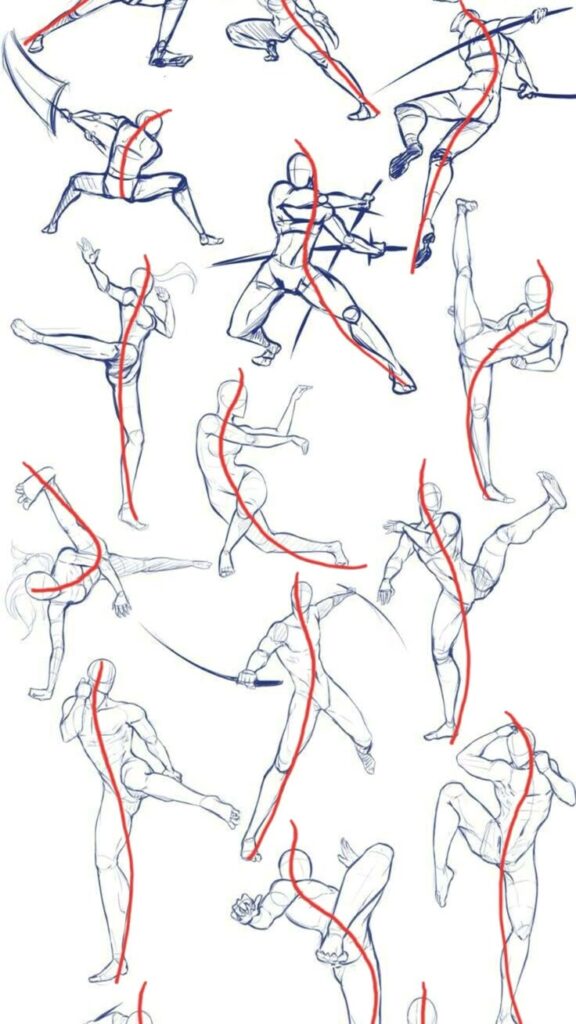
The line of action is an imaginary curve that guides the pose’s main movement. It runs through the figure to show flow and energy. This line helps artists avoid stiff or awkward poses. By starting with a strong line of action, the figure’s pose becomes more natural and fluid.
The line usually curves gently to suggest motion or tension. For example, a dancer mid-leap might have a sweeping S-shaped line of action. This keeps the figure balanced and visually interesting. Artists can sketch this line lightly first, then build the body’s parts around it.
Using the line of action also helps combine different body parts into one unified movement. It encourages bending and twisting that feels real. This simple step makes a big difference in drawing poses that look lively.
Working With Contrapposto
Contrapposto is a classic pose technique where the weight rests on one foot, making the hips and shoulders tilt in opposite directions. This creates a natural S-curve in the body, adding balance and life to standing figures.
This pose breaks away from stiff, straight stances. It shows how the body shifts weight and reacts to gravity. For example, one hip might be raised while the opposite shoulder drops. This small tilt adds interest without overcomplicating the pose.
Artists should focus on contrasting angles in shoulders and hips to create this effect. It’s a simple way to add subtle motion and personality. Contrapposto gives a relaxed, confident feel and improves the overall flow of the figure.
Adding Foreshortening
Foreshortening happens when parts of the body point toward or away from the viewer. It changes how these parts look, making them appear shorter or larger based on perspective.
To draw foreshortening well, artists must understand anatomy and perspective rules. For example, an arm reaching toward the viewer looks bigger at the hand and smaller near the shoulder. This makes the figure feel three-dimensional.
Practicing from references helps artists recognize how limbs and torso shift in space. They can also break down shapes into simple forms, like cylinders or boxes, to visualize the angles clearly. Adding foreshortening adds depth and drama, making poses more dynamic and realistic.
Adding Expression and Storytelling
Dynamic poses become much more powerful when they show emotion and tell a story. Small details like the character’s face, hands, and overall body language work together to create meaning. These elements help the viewer connect with the character on a deeper level.
Integrating Facial Expressions
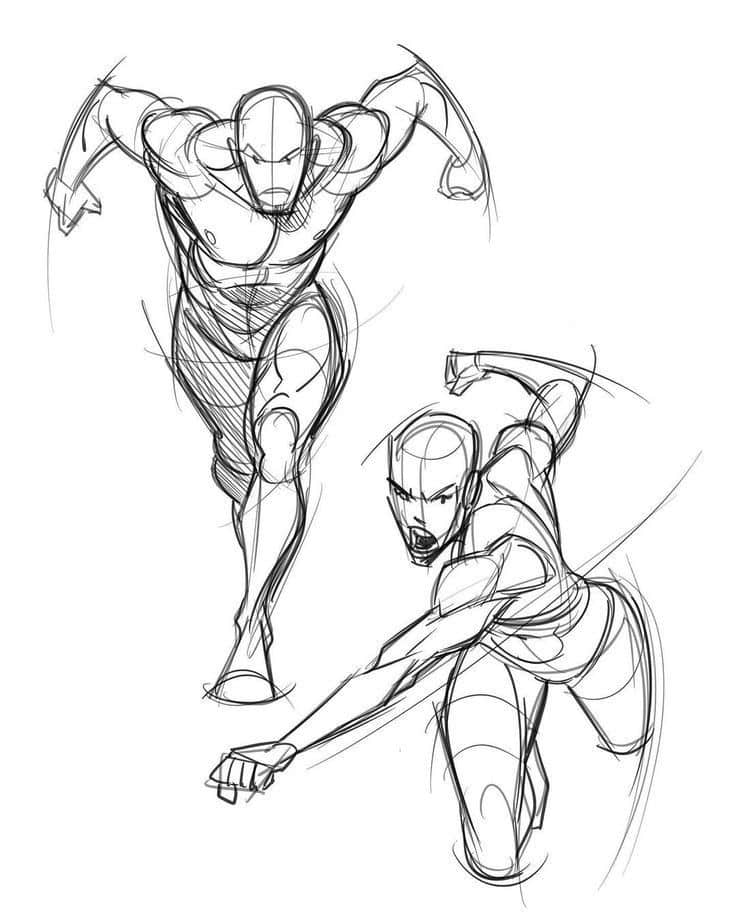
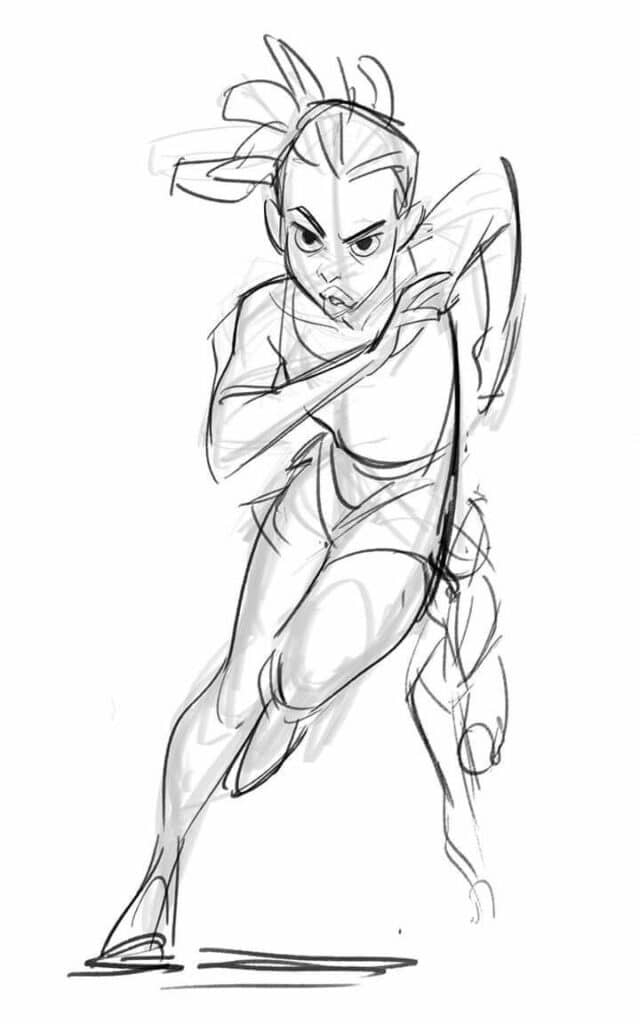

Facial expressions are key to showing what a character feels. Eyes, eyebrows, and mouth shapes can signal emotions like anger, surprise, joy, or sadness. Artists should focus on how these features change naturally during different feelings.
For example, raised eyebrows and wide eyes often show shock. A slight smile with relaxed eyes can express calm happiness. Subtle changes, like a furrowed brow or pursed lips, add nuance to the mood. Using reference photos or mirror studies can help capture these small but important details. The face often tells the first part of the story, so it’s worth spending time making it clear and believable.
Using Hand Gestures
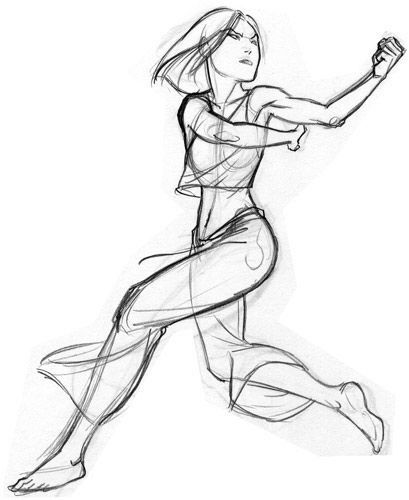
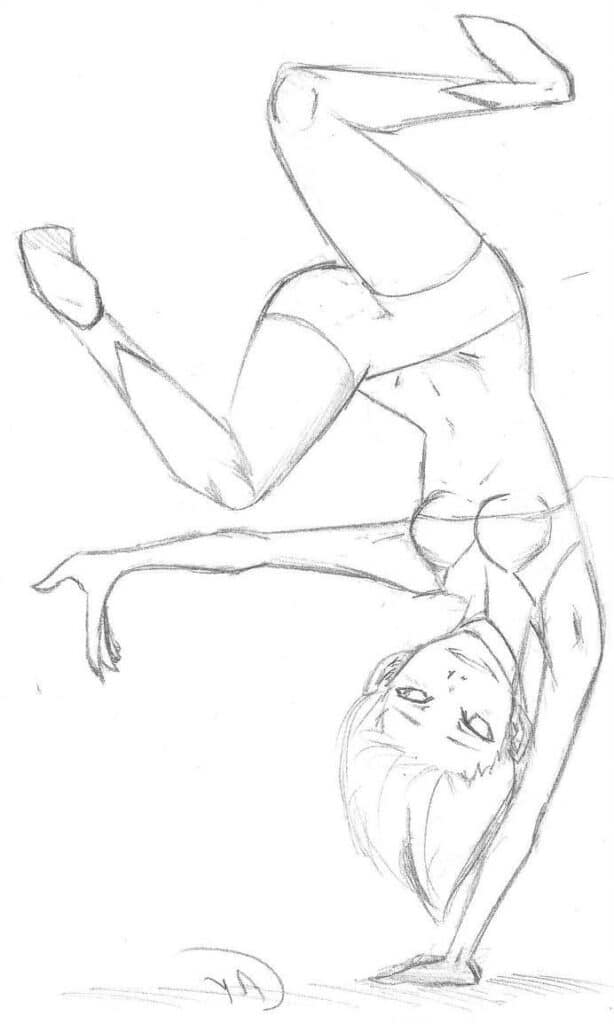
Hands are very expressive and can support or even change what the face says. Open hands might signal honesty or openness, while clenched fists can express anger or determination. Pointing fingers can direct attention and create interaction in a scene.
Artists should pay attention to how the fingers and wrist move naturally. Stiff or awkward hands can weaken a pose. It helps to break the hand into simple shapes when sketching, then add details to get realistic gestures.
Including hands that interact with objects or other characters adds layers to the story. For example:
| Gesture | Possible Meaning |
|---|---|
| Open palm | Invitation, peace |
| Fist | Anger, strength |
| Pointing | Direction, focus |
| Touching face | Thoughtfulness, worry |
These details make a pose feel alive and intentional.
Suggesting Emotion Through Body Language
The whole body plays a huge role in showing emotions and personality. Posture can say if a character is confident, shy, tired, or excited. The tilt of the head, curve of the spine, and placement of the feet all tell part of the story.
A slouched position might imply sadness or exhaustion. Leaning forward with clenched fists shows eagerness or anger. Even small shifts, like a raised shoulder or a turned torso, add realism.
Artists should think about how every part of the body relates to the emotion. Combining expressive body language with clear facial expressions and hand gestures creates a full, believable character. This attention to detail turns static art into a visual story the viewer can understand right away.
Practicing and Improving
Consistent effort and smart learning strategies help artists build better skills in drawing dynamic poses. Focusing on daily practice, studying great artists, and measuring progress are key to steady improvement.
Daily Sketching Routines
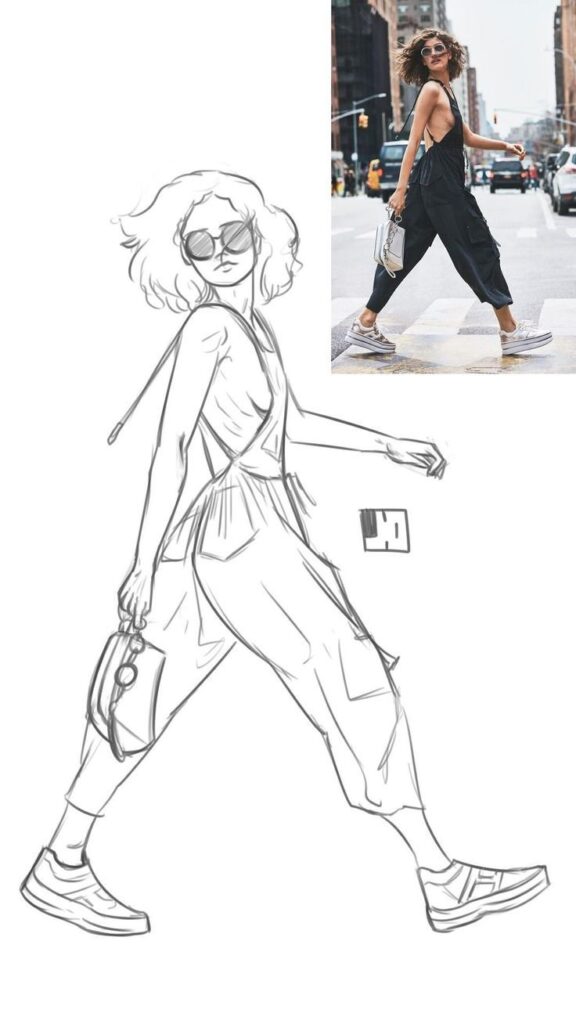

Sketching regularly is one of the best ways to improve pose drawing. Even short sessions of 10-15 minutes each day make a big difference over time. Quick gesture drawings help capture movement and energy without worrying too much about details.
Artists should try to draw different actions like running, jumping, or twisting. This variety trains the eye to see poses from many angles. Using timed sessions, such as 30-second or 1-minute sketches, encourages speed and confidence.
Keeping a sketchbook handy allows for easy access to practice whenever possible. Repeatedly drawing simple poses from imagination and reference builds muscle memory.
Learning From Master Artists
Studying the work of skilled artists can guide newcomers in understanding pose dynamics. Looking at how masters use lines, shapes, and body language offers clues for making drawings feel alive.
Artists should analyze a range of styles and methods. They can watch speed drawing videos, follow step-by-step tutorials, or attend live demonstrations.
Copying poses for practice is helpful but not just for exact replication — it’s about learning the flow and balance the masters achieve. Over time, this deepens their ability to invent original poses with natural movement.
Feedback from mentors or online art communities also helps refine skills by pointing out areas to improve.
Tracking Your Progress
Keeping track of improvements helps artists stay motivated and identify strengths and weaknesses. Before and after comparisons, dated sketches, or digital folders organized by date can show visible growth.
Using simple charts or lists, artists can set small goals like “draw 5 jumping poses this week” or “improve hand positioning.” Reviewing progress every few weeks helps focus practice on areas that need work.
Recording specific challenges, such as struggling with foreshortening or balance, allows targeted exercises. Reflecting on what worked well and what didn’t builds better habits.
Tracking progress turns practice into a clear learning path, making skill growth easier to measure.
How does understanding anatomy and perspective help in creating lively poses?
Understanding basic anatomy and perspective helps bring more life to poses by ensuring the figures look natural and proportionate, making the action more believable.
What is the key to drawing dynamic poses?
The key to drawing dynamic poses is focusing on gesture, balance, and the flow of the body rather than just the details.
What are common mistakes artists should avoid when drawing dynamic poses?
Artists should avoid making poses too stiff or straight, ignoring balance, and focusing too much on details too early, as these can make figures look unnatural and lifeless.
How do line of action and contrapposto improve pose dynamics?
The line of action guides the main movement with a flowing curve, making poses more natural and energetic, while contrapposto introduces a natural tilt in standing poses, adding balance and life by shifting weight realistically.
Why is gesture drawing important, and how can it be practiced effectively?
Gesture drawing is important because it captures the energy and movement of a pose quickly, helping artists learn to emphasize action and flow. Practicing with quick sketches, around 30 seconds to 2 minutes, and focusing on movement rather than details enhances this skill.
- 0shares
- Facebook0
- Pinterest0
- Twitter0
